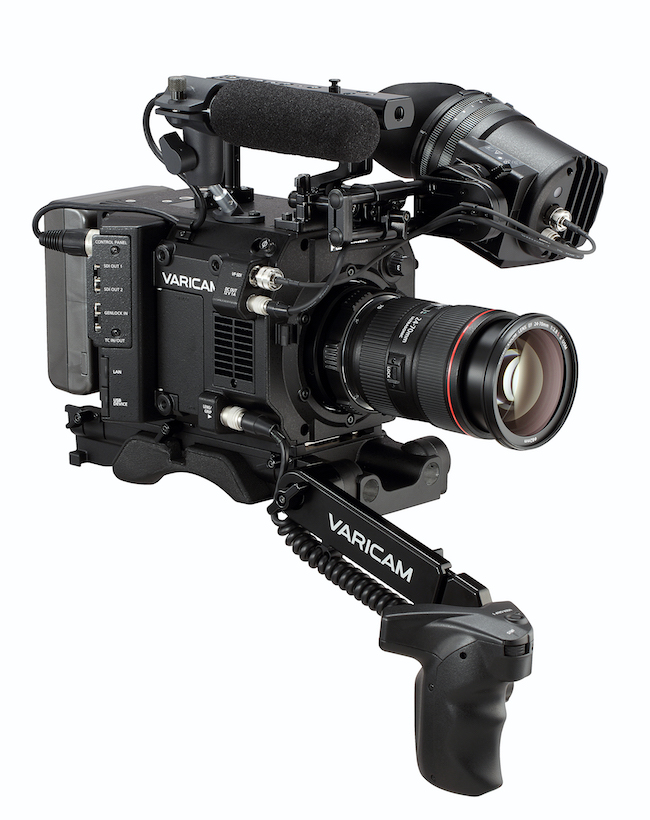
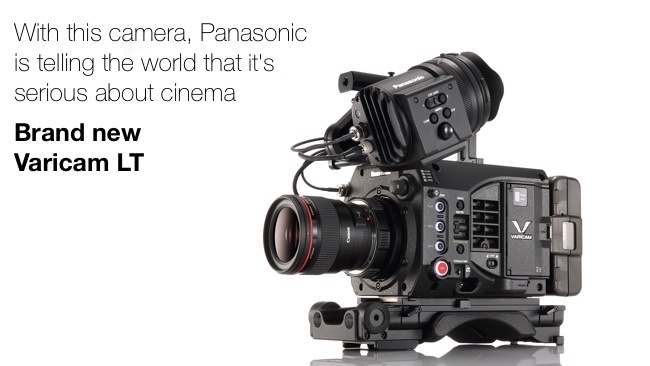 Panasonic Varicam LT
Panasonic Varicam LT
Half the weight, half the price, two-thirds of the size but with most of the same functionality of its big brother, Panasonic's new Varicam LT is a very good and a very important new Cinema Production camera. Here's how and why.
The new Varicam LT from Panasonic is surprising and in some ways predictable at the same time. And it’s very, very significant. It’s significant because it is clearly a very good camera. But it’s even more so because of the statement it makes.
Because what Panasonic is saying with this camera is that Production is not just important to them, it’s a central part of their entire strategy. Another way of saying this is that the original Varicam 35 was not just a one trick wonder: it is the first of an entire range of cameras aimed not at the studio - which is seen as Panasonic’s “traditional” strength, but at drama, cinema and the entire gamut of filmmaking that aspires to the very highest levels.
In other words - and this may seem ironic given that the Varicam LT is essentially a cut-down version of the Varicam with some unique features - with this new camera, Panasonic has said “We’re the ones to beat”.
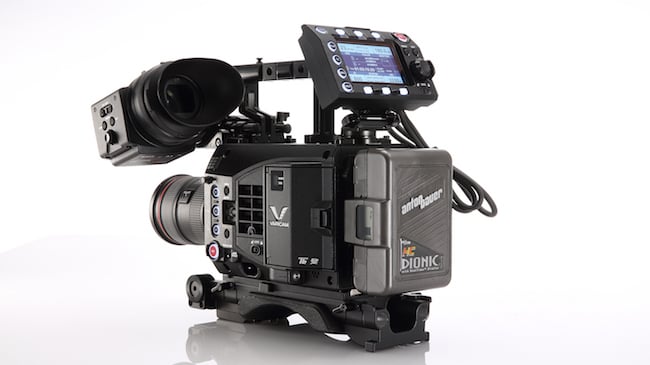
Let’s get this out of the way first. This is a camera that most people will consider to be expensive. It’s €18,000 for the body only, and €28,000 for a camera fully loaded with accessories. The viewfinder is not included in the basic price because it’s a fairly expensive device and Panasonic wanted to provide a simple SDI output so that users can use third party viewfinders to keep the price down. And because by default it comes with an EF mount, it can be used with much cheaper lenses.
It’s not a natural upgrade for DSLR shooters - it just won’t be compatible with their budgets. But that’s not the point. What’s far more relevant here is that the Varicam LT is around half the price of the Varicam 35, with very nearly the same level of performance (if you leave out some of the higher bitrate options). And given that the Varicam has had reviews that put it on the same stratum as the very best cinema cameras out there, this means that that sort of quality and feature set is now available at a much lower price.
And while we’re talking about DSLR shooters, let’s not forget that some of them graduate to much more expensive kit. I’m quite sure that the Varicam LT will be within the grasp of the more ambitious ones.
My first impressions of the camera were that it is a very serious-looking piece of kit. It looks like a confident product made by an equally confident manufacturer.
So how does it differ from the full size Varicam 35? It’s smaller. It’s two thirds of the length and almost half the weight. Power consumption is less too. What’s missing? Not much that you’d notice unless you’re shooting at (or for) the very top end.
More than a cut down version of the Varicam 35
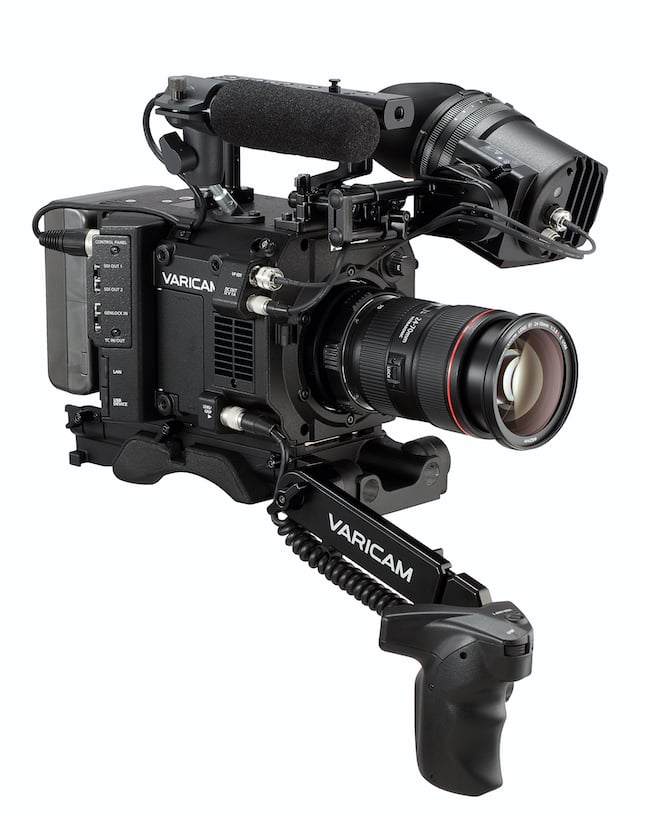
This is much more than a cut down version of the bigger camera. It has the same 35mm sensor and colour science. It’s designed to be operated by one person. Obviously the lighter weight helps here. There’s an optional side grip - in much the same style as Sony’s FS7. It comes with an EF mount but can be fitted with a PL mount by the user.
There’s a centre crop for 2K and HD that changes the apparent focal length, but 2K/HD can also be obtained by downscaling from the full 4K sensor, (which, by the way, has exactly the same number of pixels as a full DCI 4K or UHD raster).
There’s a removable IR filter, and the camera has integrated “looks”. It’s pretty flexible with colour handling and it will accept LUTs and output them to a connected monitor. It acts in this sense just like a “LUT Box”.
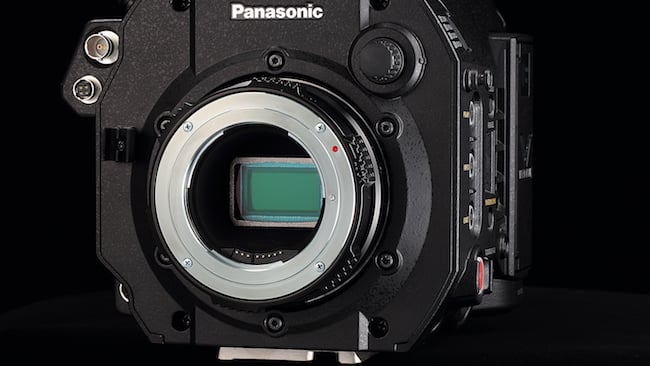
A significant difference but one that's unlikely to cause any problems is that the Varicam 35 has 5 “Dyna” chips. These are the processing blocks that - amongst other things - process the video for recording in Panasonic’s AVC Ultra format. They also allow the Varicam 35 to output 4K at 4:4:4.
The new camera has only three of the chips, and its output is limited to 4K 4:2:2. RAW output via two 3G SDI sockets is expected to come in June (approximately). This will allow outputting to an Atomos or a Convergent Design external recorder.
It has 14+ stops of lattitude. That’s big enough for true HDR, and is genuinely useful in the cinema space. We’re always the first to say that noise makes claims about dynamic range subjective, but - as you’ll read in a minute - the noise apparent in the picture is so low that these DR claims are, I believe, genuine.
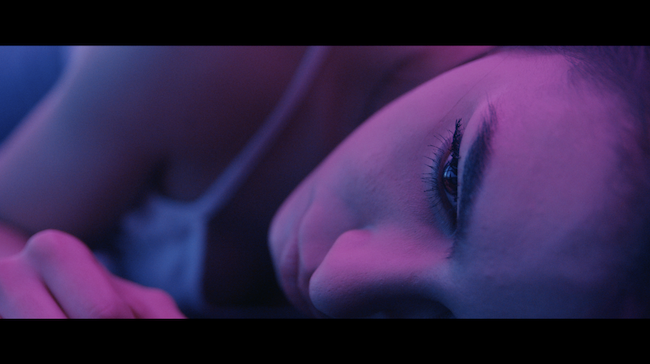
One reason for the low noise - and this is a feature shared by the new camera and the original Varicam 35 - is that there are two “native” ISOs: one at 800 and the other at 5000. This is a quite curious thing. It’s accomplished by having a different dedicated analogue circuit for each ISO. The upshot of it is that if you’re filming in good light, use ISO 800, and you’ll get a very good picture. If you’re shooting at night or have limited light, use ISO 5000 and you’ll have a detailed, saturated picture that’s got detail in the darks, and little apparent noise.
What you don’t want to do is shoot at ISO 4500, because that will mean you’re actually shooting at 800 with a lot of gain. Instead, switch to ISO 5000, and you’ll start again with a much less noisy picture.
How you use this facility is up to you but it is certainly very good to have two native ISOs in one camera.

We were shown two short films made with the Varicam LT. One was mostly in the dark and the other was shot in unusual circumstances - at the top of a tall hotel building in Barcelona, with internal magenta lighting from the roof of a bar, and dawn sunlight streaming in though the windows. Both films showed that this is a very able camera. I made notes as I was watching:
Pictures - first impression
Textures in low light very good.
Very low noise indeed.
Contrasty without looking 709
Saturated colours.
Very detailed. Good dynamic range.
Natural skin tones.
Good with highlights.
My felling is that this is a camera that is in control of things. It’s a bit like the way you could theoretically drive a lot of cars at 160mph. But to feel safe at that speed, you’d want a really good one. The Varicam LT looked to me like a camerathat has the potential to create truly great moving pictures, but which is well priced, and designed to be a workhorse: an accomplished one at that.
Take a look below.
PANASONIC ADDS VARICAM LT TO CINEMA LINEUP
Panasonic has extended its cinema line up with the addition of the VariCam LT, a lightweight, compact camera, offering many of the features of the 4K VariCam 35.
The camera retains the ability to shoot in both 4K (4096 x 2160) and UHD (3840 x 2160) and features high sensitivity, low noise, wide dynamic range and a cinematic depth of field.
In order to maintain the VariCam ‘look’, the VariCam LT is equipped with a 35mm single-chip MOS sensor, originally developed for the VariCam 35 and has a similarly wide dynamic range. This ensures accurate image rendering over the entire image, from dark areas to highlights.
This sensor has two native ISO settings of 800 and 5000. Having two dedicated analog circuits means much higher sensitivity without increased noise. The ‘V-Gamut’ in the VariCam LT gives the camera a wider colour gamut than traditional film. The ‘V-Log’ gamma curve has evolved further to extend the dynamic range to 14+ stops.
In addition the VariCam LT offers the ability to change the mount from an EF mount (standard) to a PL mount (optional), increasing the range of usable lenses.
“This is the next generation of digital cinema innovation,” said Luc Bara, Technical Product Manager for Panasonic. “Even in dimly lit scenes, which are particularly important in film production, the VariCam LT provides low-noise images without any compromise to picture quality.
“We also see this being popular in the freelance market and with documentary camera operators, who require a true 4K camera that is designed for single operator field use.”
Capable of 60fps in 4K, the camera also has a new sensor centre crop mode, allowing 240fps for slow motion in both HD and 2K.
It is cost efficient in both operation and workflow due to in-camera colour grading, AVC-Ultra codec and multiple recording formats (4K/UHD/2K/HD proxy).
The VariCam LT supports both Panasonic and third party viewfinders and comes with a number of optional extras including shoulder mount, grip and PL mount. The camera body has an RRP of €18,000 and is available from March 2016.
Tags: Production


Comments